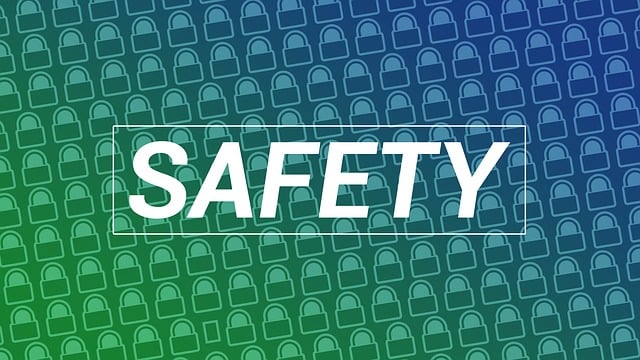Geofencing, leveraging GPS and geospatial boundaries, revolutionizes access control by integrating with digital door locking systems. This technology automates entry points, granting or revoking permissions based on individual location. For instance, employees' digital keys activate upon entering a parking lot, enabling seamless access to specific building areas. Organizations enhance security, prevent unauthorized access, and gain real-time monitoring capabilities through this innovative solution. Digital door locking systems, powered by geofencing, eliminate physical keys and manual processes, streamlining security procedures for commercial buildings, industrial sites, and homes, while offering enhanced tracking and remote management. Despite privacy concerns and GPS disruptions, advancements in algorithms and data encryption make geofencing a promising mainstream solution.
Geofencing technology is transforming access control by enabling location-based security solutions. This innovative approach, which defines virtual boundaries around physical areas, allows for precise control over who enters and exits premises. In this article, we explore the rise of digital door locking systems powered by geofencing, their enhanced security features, and the multifaceted benefits they bring. We also delve into the challenges and future prospects of this cutting-edge technology in access control.
Understanding Geofencing and Its Role in Location-Based Access Control
Geofencing is a cutting-edge technology that utilizes GPS and geospatial boundaries to define and monitor specific areas, known as geofences. When integrated with digital door locking systems, it plays a pivotal role in implementing location-based access control. This innovative approach allows businesses and property owners to automate and secure entry points based on an individual’s geographical location.
By setting up geofences around a facility or a defined area, access permissions can be granted or revoked automatically when someone enters or exits the designated zone. For instance, in a corporate setting, employees with authorized access could have their digital keys activated upon entering the parking lot, enabling seamless entry to specific floors or areas within the building. This technology enhances security by preventing unauthorized access and providing real-time monitoring capabilities for location-based control over digital door locking systems.
Digital Door Locking Systems: A New Era of Security
Digital door locking systems are ushering in a new era of security, transforming traditional access control methods. These innovative solutions leverage cutting-edge technology like geofencing to enable location-based access, enhancing safety and convenience. By integrating digital locks with GPS and sensor data, users can automatically gain entry when within predefined geographic boundaries.
This sophisticated approach eliminates the need for physical keys or manual authorization, streamlining security protocols. Moreover, digital door locking systems offer enhanced tracking capabilities, allowing administrators to monitor who enters specific areas and when. This level of granularity empowers businesses and property owners with valuable data, facilitating better security management and improved overall safety.
How Geofencing Enhances the Functionality of Smart Locks
Geofencing technology has revolutionized access control by seamlessly integrating with digital door locking systems, enabling intelligent and automated security measures. This innovative approach leverages GPS and Bluetooth signals to create virtual boundaries around a physical location. When an authorized device or person enters or approaches this geofenced area, smart locks can automatically unlock, providing immediate and convenient access.
This integration enhances the functionality of digital door locking systems by ensuring that only permitted individuals gain entry, reducing the risk of unauthorized access. Moreover, geofencing enables remote management, allowing security administrators to control access from a central location. This capability is particularly valuable in scenarios such as commercial buildings, where access needs can vary based on occupancy and time of day, ensuring optimal security and convenience for all users.
Benefits, Challenges, and Future Prospects of Geofencing in Access Control
Geofencing technology is transforming access control by enabling location-based automation, enhancing security for various applications including commercial buildings, industrial sites, and even homes. One of its key benefits is improved efficiency; digital door locking systems can now automatically open or close based on predefined geo-fences, eliminating the need for manual intervention. This reduces not only human error but also the potential for unauthorized access during staff absences.
Despite these advantages, challenges exist. Privacy concerns are paramount, as geofencing relies on accurate location data. Balancing security with individual privacy remains a critical issue, especially in public spaces. Another challenge is system reliability; any disruption in GPS signals or mapping accuracy can lead to false triggers and potential access issues. However, the future of geofencing in access control looks promising, with advancements in technology set to address these challenges. More sophisticated algorithms and improved data encryption could make geofencing a mainstream solution for secure, automated digital door locking systems.
Geofencing technology is transforming access control by seamlessly integrating physical security with digital solutions. As explored through this article’s various sections, digital door locking systems equipped with geofencing offer enhanced functionality, flexibility, and efficiency. By leveraging GPS signals to define virtual boundaries, these systems enable secure, automatic access based on location. While benefits like remote monitoring, improved convenience, and reduced false alarms are significant, challenges such as data privacy concerns and initial implementation costs must be addressed. Moving forward, the future of geofencing in access control looks promising, with advancements in technology poised to unlock new possibilities for both residential and commercial applications of digital door locking systems.
